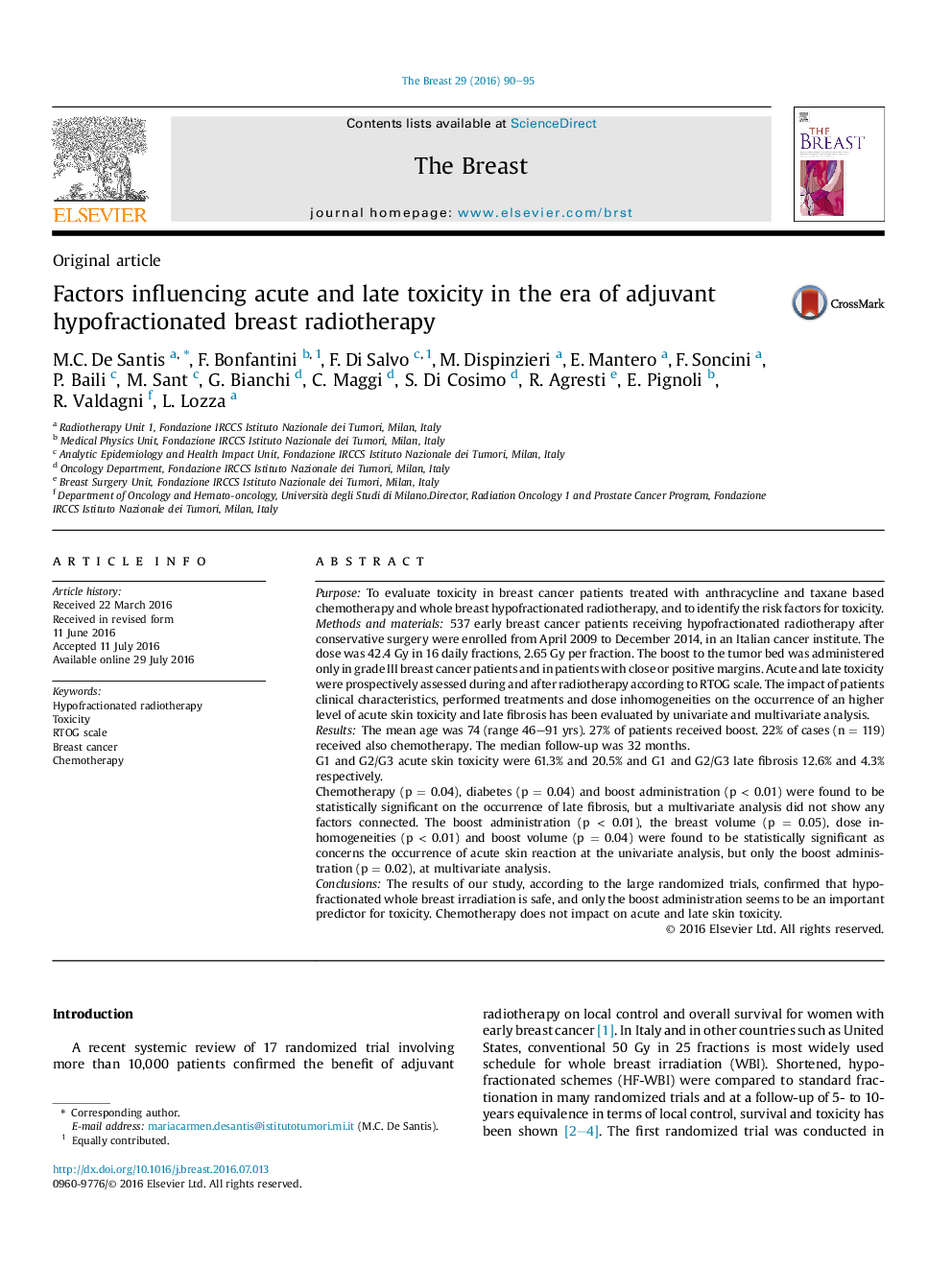| کد مقاله | کد نشریه | سال انتشار | مقاله انگلیسی | نسخه تمام متن |
|---|---|---|---|---|
| 6169364 | 1599351 | 2016 | 6 صفحه PDF | دانلود رایگان |

- Hypofractionated whole breast irradiation is safe.
- The administration of a boost is an important contributor to toxicity.
- Chemotherapy does not impact on acute and late skin toxicity.
- The percentage of fibrosis might increase with longer follow-up.
PurposeTo evaluate toxicity in breast cancer patients treated with anthracycline and taxane based chemotherapy and whole breast hypofractionated radiotherapy, and to identify the risk factors for toxicity.Methods and materials537 early breast cancer patients receiving hypofractionated radiotherapy after conservative surgery were enrolled from April 2009 to December 2014, in an Italian cancer institute. The dose was 42.4 Gy in 16 daily fractions, 2.65 Gy per fraction. The boost to the tumor bed was administered only in grade III breast cancer patients and in patients with close or positive margins. Acute and late toxicity were prospectively assessed during and after radiotherapy according to RTOG scale. The impact of patients clinical characteristics, performed treatments and dose inhomogeneities on the occurrence of an higher level of acute skin toxicity and late fibrosis has been evaluated by univariate and multivariate analysis.ResultsThe mean age was 74 (range 46-91 yrs). 27% of patients received boost. 22% of cases (n = 119) received also chemotherapy. The median follow-up was 32 months.G1 and G2/G3 acute skin toxicity were 61.3% and 20.5% and G1 and G2/G3 late fibrosis 12.6% and 4.3% respectively.Chemotherapy (p = 0.04), diabetes (p = 0.04) and boost administration (p < 0.01) were found to be statistically significant on the occurrence of late fibrosis, but a multivariate analysis did not show any factors connected. The boost administration (p < 0.01), the breast volume (p = 0.05), dose inhomogeneities (p < 0.01) and boost volume (p = 0.04) were found to be statistically significant as concerns the occurrence of acute skin reaction at the univariate analysis, but only the boost administration (p = 0.02), at multivariate analysis.ConclusionsThe results of our study, according to the large randomized trials, confirmed that hypofractionated whole breast irradiation is safe, and only the boost administration seems to be an important predictor for toxicity. Chemotherapy does not impact on acute and late skin toxicity.
Journal: The Breast - Volume 29, October 2016, Pages 90-95